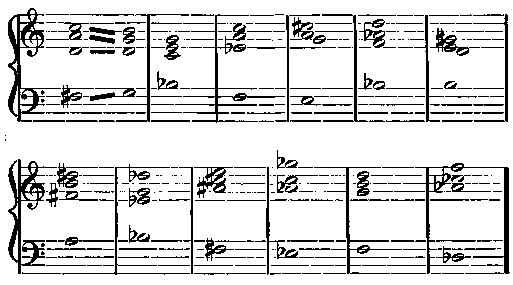Harmony Book For Beginners - online book
Scales, Intervals, Common Chords, Dominant Seventh Chord and Melody Making.
| Share page | Visit Us On FB |
|
130 |
OREM'S HARMONY BOOK |
||
|
The foregoing will prove splendid practice. It will hardly be necessary to write these out in the Minor Scales at this time. The Progressions are identical, except for the fact that the Minor Tonic Chord must contain a Minor Third.
The following exercise will prove profitable and interesting. A number of Dominant Seventh Chords are given, in various Positions and Inversions. The student will write in the proper Major Tonic Chord after each Dominant, at the same time marking in the leading of the various Members of each Chord, just as in the foregoing examples. The first one is done complete, as a model for the following ones. It will be necessary for the student to analyze each Dominant Seventh Chord. Rearrange the notes of each one, mentally, so that the Chord will read up in Thirds. . When you are sure of the Root of the Dominant Seventh Chord, it will be easy enough to locate the proper Tonic Chord. |
|||
|
|
|||
 |
|||
|
The foregoing exercise must not be left until it is worked out correctly in every detail. Make an ear training exercise of it, also.
The Three Inversions of the Dominant Seventh Chord are Figured (with Roman |
|||
|
|
|||
 |
|||
|
|
|||
|
Numeral V, signifies Dominant Seventh Chord. A#er the student understands the Chord itself, there will be no trouble with the Figures. The various Positions are left to the taste and judgment of the student.
Now for an example introducing Positions and Inversions of the Dominant Seventh Chord. Figures and Numerals are given; but let the student analyze carefully. Play and sing many times. |
|||